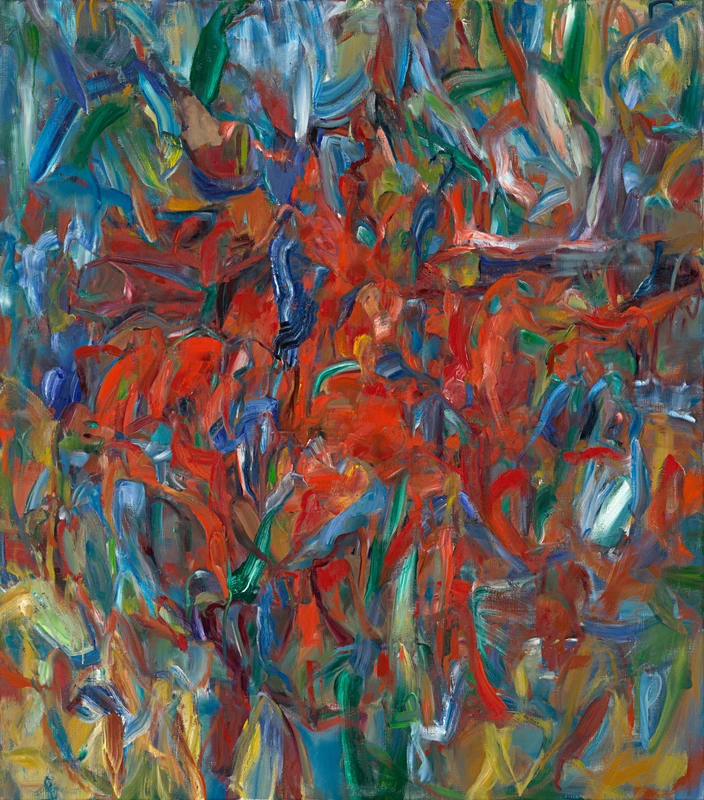Sabine Moritz
27 Apr-17 Jun 2023
PV 27 Apr 2023, 6-8pm


Pilar Corrias is pleased to present a series of new paintings by Sabine Moritz across both gallery spaces. Under the Skin and Heart of Drought focus on the juxtaposition of the external and internal world, setting the works within a larger continuum of an ever-immediate present.
The artist’s exploration of the dynamics of memory – how it is constituted, and the ways in which it is subjected to continuous processes of deformation and reformation – is a recurring and prominent concern. Playing with repetition and difference on the canvas, Moritz confronts the viewer with uncertainty, questioning whether memory can ever be an unmediated representation of the past. Moritz uses an unconscious process during the composition and creation of each work, resulting in what she calls a ‘fragmented beauty’. In this new series of paintings Moritz dissects these concerns of beauty and hope – holding onto beauty in defiance of the despair surrounding us.
Moritz adds layer upon layer of colour and form, at times overpainting, or scraping away, until she knows that the work is complete. The result often consists of a plethora of colours and lines that relate to one another without necessarily existing in harmony. Sometimes colours clash and shapes collide. However, as in a symphony, where each instrument adds a layer that is crucial for the music as a whole, the individual elements of her paintings contribute to the overall composition of the work. As themes appear and reappear through a composition, colours and shapes reappear in different areas on the canvas, holding the work together.
The mysterious, blue-toned Kamchatka III and Kamchatka IV refer to the Russian Peninsula, evoking a faraway place, too distant to understand. Is this an idyll or a realm of natural disasters?
Themes of human fragility, sensuality and strength are reflected in the painting Artemis and Actaeon, inspired by Titian’s rendition of the same subject in which the goddess Artemis turns Actaeon into a deer upon him seeing her naked, only for him to then be devoured by his hounds. Without portraying nature figuratively, Moritz’s abstractions are grounded in the natural world; they evoke a longing not for a specific place, but a lost idyll that cannot be reached again. She pays homage to the German notion of ‘Heimat’, which the philosopher Ernst Bloch described in the book The Principle of Hope (1954) as ‘something that shines into everyone’s childhood and where no one has ever been.’
Described by Hans Ulrich Obrist as ‘memories made visual – the fleeting impulses of the past rendered concrete in art’, Moritz’s work may be interpreted, above all, as a protest against forgetting, while also depicting the inherent fragility, mutability and immateriality of memory.